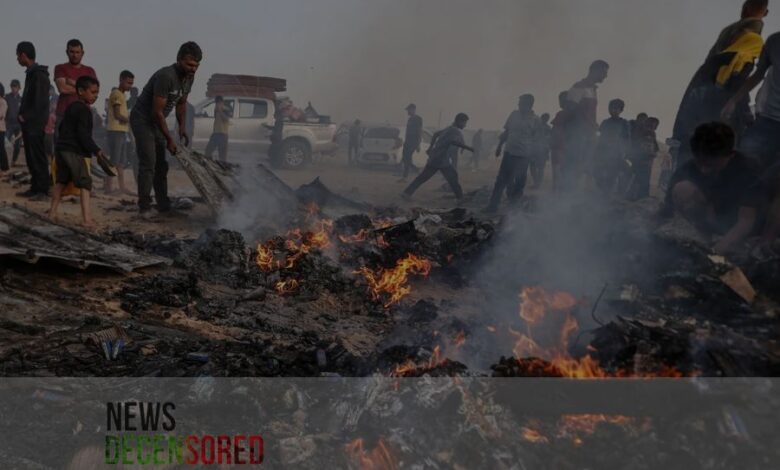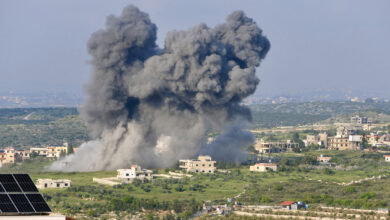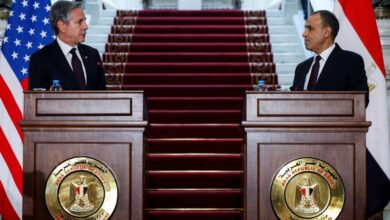Israel’s attack on the Rafah tent camp, described as a ‘heinous massacre,’ has been widely condemned

Gaza – Riyad Al-Khatib insisted on staying in his home in the Tal Al-Sultan neighborhood, west of Rafah, until what he described as “the last minute,” when the Israeli occupation would expel him, similar to what happened in the eastern areas and neighborhoods of the city.
This neighborhood is still “vibrating with life” even though most displaced people have left for different destinations. Al-Khatib said that the ground military operation in the east of the city terrified the residents and displaced people, and many preferred displacements for fear of its expansion to the rest of the city’s neighborhoods and areas.
On May 6, the occupation began a military operation in Rafah, which less than 300,000 people inhabited before the outbreak of war. Still, it became the last refuge for the displaced who were forced to leave their homes, as their number is estimated at more than one million people.
The streets of Rafah appear empty as families continue to flee in search of safety, and their members face constant exhaustion, hunger and fear, as there is no safe place in the Gaza Strip, according to data from the United Nations Relief and Works Agency for Palestine Refugees ( UNRWA ).
With an imaginary line drawn with “firepower,” the occupation divides the city of Rafah – the smallest city in the Gaza Strip – into two halves: western and its largest neighborhood, Tal Al-Sultan, and eastern, which includes the “Yabna” and “Al-Shaboura” refugee camps, and the neighborhoods of Brazil, Al-Geneina, Al-Salam, Al-Shawka, and other areas close to the crossing. Rafah, along with Egypt and the Israeli security fence, have turned into a “ghost town.”
Movement beyond the Zarob Junction to the east is considered to be fraught with extreme danger, even though the Israeli evacuation orders did not cover all of this area. However, people feared a significant and widespread operation, and many residents and displaced people decided to leave the city in fear of a fate similar to what happened in the neighboring town of Khan Yunis.
International and local estimates indicate that approximately 800,000 Palestinians have been displaced from the city of Rafah so far, the majority of whom were forced to leave their areas of residence following the outbreak of war in October of last year, as “Tal al-Sultan” was one of the neighborhoods that received the most displaced people. The homes of relatives and friends, shelter centers, and tents spread across the streets, lanes, squares, and public squares were crowded with them.
Big prison:
Services and cleanliness in the city of Rafah were directly affected by the scarcity of fuel needed for waste collection and transport mechanisms and the operation of the main water wells. According to Al-Sufi, municipal crews cannot work in the east and center of the city, and they need more essential services, most notably water.
Al-Sufi views the occupation of the Rafah crossing, which is considered the only outlet for Gazans to the outside world, and the prevention of the travel of the sick and wounded and the entry of aid, in addition to the closure of the only commercial crossing of Kerem Shalom, as a slow death sentence for 2.2 million Gazans.
With the closure of these two crossings, the sector turns into a “large prison,” according to the Director General of the Government Information Office, Ismail Al-Thawabta, “the continued closure of the two crossings heralds famine.” He said that the occupation of the Rafah crossing stopped the flow of humanitarian aid and deprived more than 10,000 wounded and sick people of the opportunity to travel for treatment abroad.




